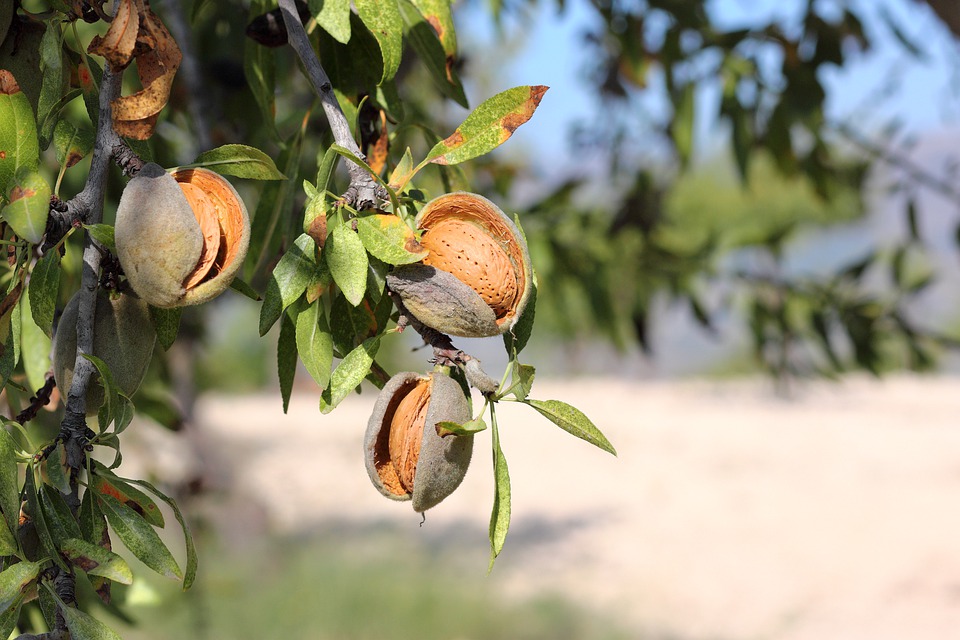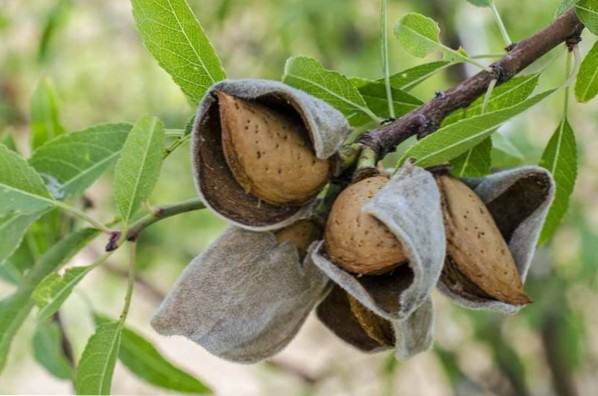
National Almond Day is a holiday that’s designed to celebrate the healthy goodness of almonds and is celebrated on February 16th each year. Why do almonds get their own holiday? They get their own holiday because they’re one of the healthier snacks available and just about everyone could benefit from adding some to their diet. It doesn’t matter if you eat them whole, toss them into a salad or add them to your favorite dessert, these nuts are ready to bring some much-needed nutrition to the table.
Almonds, a bite-sized little nut common in trail mix and other breakfast and snack recipes. More likely than not, you’ve tried an almond before. But did you know there is an entire day devoted to the celebration of almonds?! National Almond Day is a reason for foodies to celebrate!
A little History of Almonds

Although we were unsuccessful in determining the origins of National Almond Day, we were able to ascertain where almonds came from and how they made it to the U.S.
It’s generally believed and agreed by historians (and food historians in particular) that almonds were one of the earliest cultivated foods by mankind. Almonds are mentioned as far back in history as the Bible! Although their first place of origin is debated, almonds were thought to have first been cultivated in China and Central Asia.
The almond tree is a deciduous tree that’s native to Iran and other countries in the Middle East, and it’s a tree that grows up to 33-feet high. During ancient times, it was spread into Northern Africa and Southern Europe along the shores of the Mediterranean. From those points, it would continue to be spread by traders all over the world.
While traveling the Silk Road between Asia and the Mediterranean, explorers were said to snack on almonds during the long travel times. As explorers settled in the Mediterranean region, the trees began to grow in the area. As the trees spread throughout Europe, many of them clustered in Spain and Italy.
Almonds eventually made their journey to the United States in the mid-1700s. Historians believe they made their appearance on the trade ship brought to the US from Spain by the Franciscan Padres. The trees died out in the United States quite quickly as the soil and cultivation knowledge to keep the trees alive was inadequate. It was not until the 1800’s that almond trees were successfully grown and harvested in the States. By the end of the 1800s, the Sacramento and San Joaquin areas of California became the United States biggest almond producers.
Today, almonds symbolize a variety of things. The Bible tells the story of the rod that blossomed and bore almonds, making them a divine religious symbol. The early Romans gifted almonds to family and friends as fertility charms. These gifts were typically given at weddings. Today, sugared, or frosted almonds are often given at American weddings to guests as a sign of happiness, wealth, and good fortune.
Today, 80% of the world’s almond supply comes from the U.S. Most of that production is from California, which has over a million acres of almond trees that produce a yield of over 2.25 billion pounds of shelled almonds. Most of the pollination needed for these trees is done by rented commercial bees that are trucked from all parts of the United States to California specifically for the almond trees. It’s been estimated that the pollination of Californian almonds requires half the population of the U.S bee population.
Why We Love National Almond Day


- They’re a superfood
There may be no such thing as perfect food, but almonds are pretty close. Packed with vitamins, minerals, and other important nutrients, almonds are also a reliable source of plant protein and healthy fat. Plus, studies have shown that almonds can help reduce belly fat and lower cholesterol.
- They’re amazingly versatile
There’s almost no dish that wouldn’t benefit from a sprinkling of almonds. From ice cream to green bean casserole, almonds add texture, taste, and variety to your menu. Really, everything is just a little better if you add almonds.
- They’re not just good for your insides
Eating almonds can keep your skin glowing. Almonds are a major source of vitamin E and other antioxidants that nourish the skin and reduce signs of aging. Researchers have found that several of the compounds in almonds can help fight skin cancer and damage by reversing the effects of a poor diet, pollution, and UV light exposure.
Nutty Facts About Almonds

Almonds are not only a delicious superfood that has their own holiday, but they’re actually very fascinating in their own right. What makes them so fascinating? Let’s take a look at some fun facts about these nuts and the trees that they grow on.
Almonds belong to the Rose Family.
Almonds need hot weather and cool winters to properly grow.
Almonds slow the absorption of sugar in the bloodstream.
Hundreds of published research papers tout the health effects of almonds.
Almonds supply 6-grams of protein per ounce.
Almonds supply 12 different vitamins and minerals.
There are over 30 different almond varieties.
Almonds are rich in Vitamin E and Magnesium.
Almonds make a great option for those on special diets such as Paleo, Keto and Gluten Free.
National Almond Day Activities

Give the gift of almond bark. Almond bark is a delicious, slightly decadent, and incredibly easy-to-make treat. …
Try different almonds. …
Make a marzipan sculpture
If you aren’t a fan of eating almonds, try celebrating almonds in their other forms. Consider treating yourself and your body to an almond-based lotion, shampoo, or perfume!
Consider baking a dinner or dessert using almonds. You can serve this for your family dinner or take it to a friend or loved one to enjoy. You can coat almonds in sugar, sesame seeds, or spices and bake them to create a simple and flavorful snack. For dinner, consider cooking green beans or other vegetables topped with herbs and sliced almonds!



